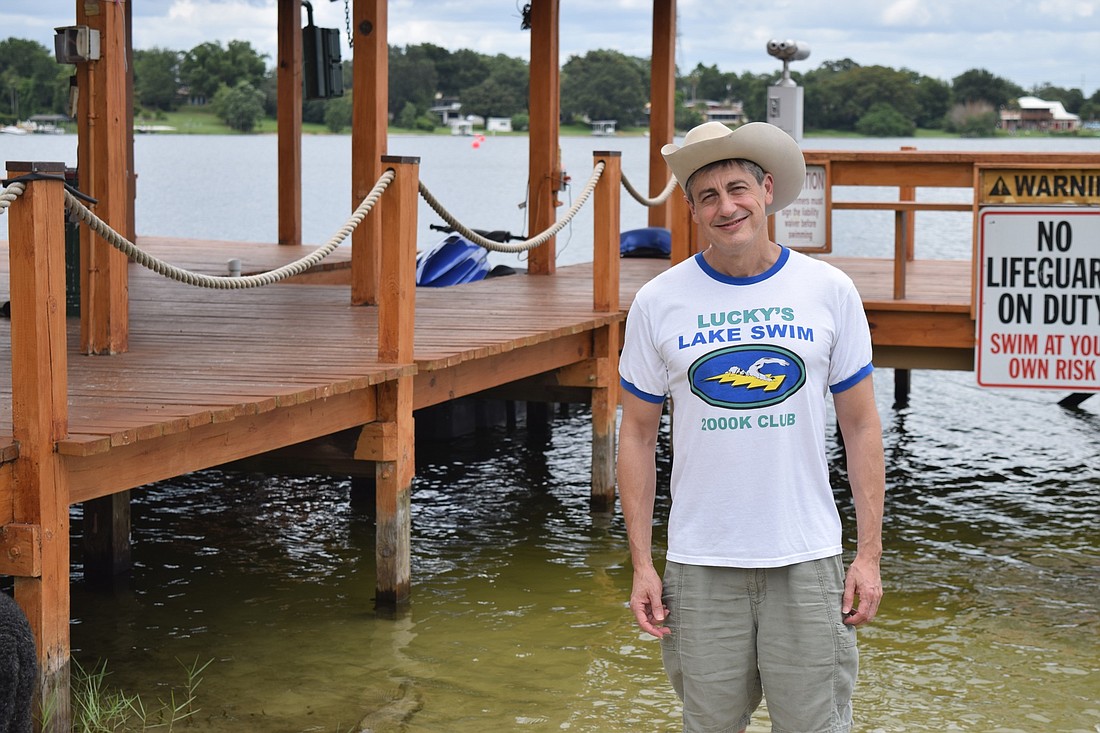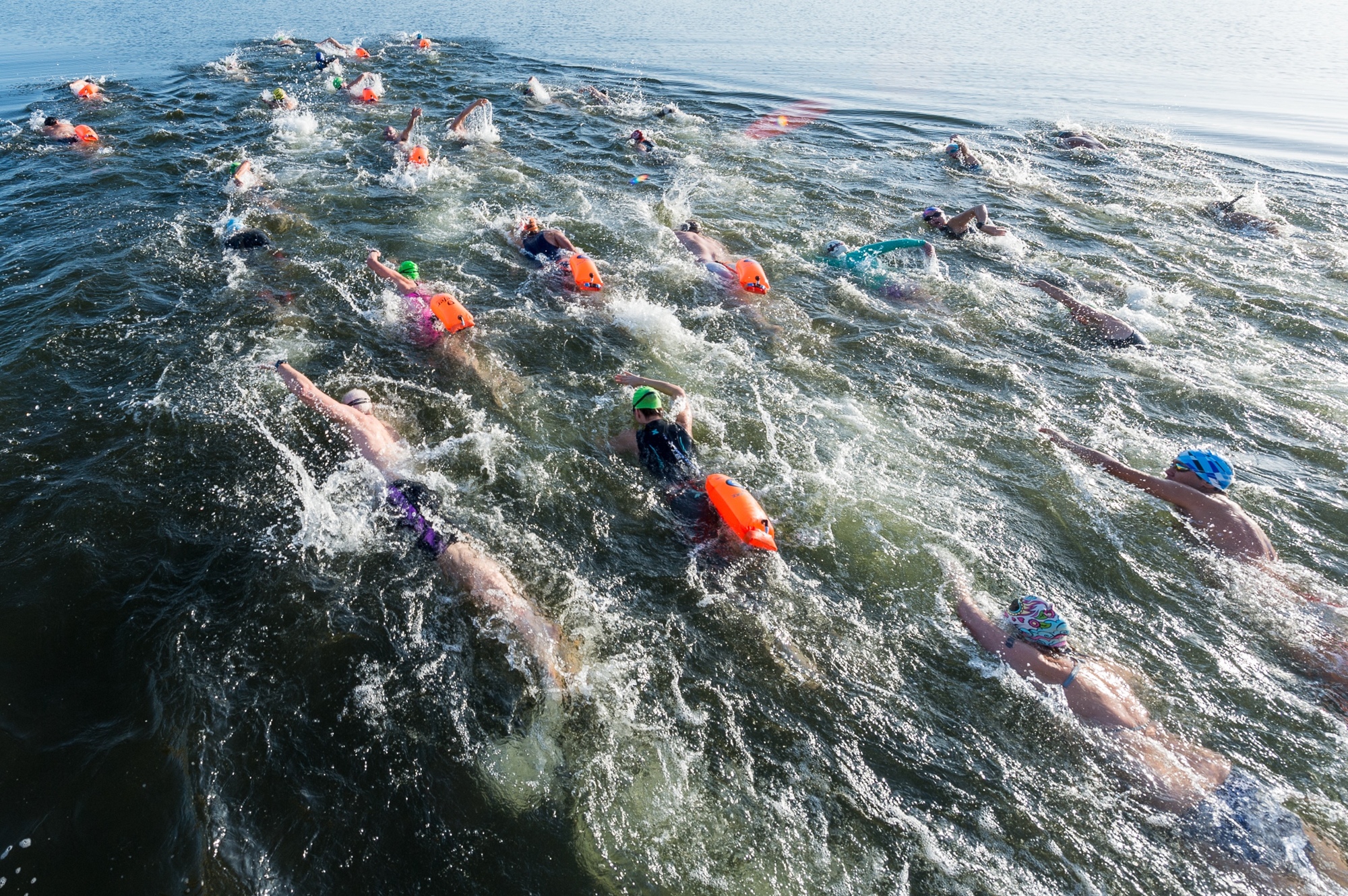- December 13, 2025
-
-
Loading

Loading

DR. PHILLIPS For some swimmers, the pool is their gym, and they are right at home within their lane lines.
But, for others, the shore line is the place to be.
Open-water swimming is not a new concept, especially in places where lakes, rivers and oceans are prominent features. In fact, it goes back as far as the 1700s and 1800s. One of Benjamin Franklin’s lesser-known feats was swimming in London’s Thames River from Chelsea to Blackfriars — a distance of about three-and-one-half miles.
Dr. John “Lucky” Meisenheimer, a Dr. Phillips resident who runs Lucky’s Lake Swim at his Lake Cane residence, believes taking the plunge outside the pool became more popular among the masses with the advent of triathlons.
“When triathlons started, it all of a sudden became necessary to swim in open water,” Meisenheimer said. “I would say of the people that come out here and swim, eight or nine out of 10 have been involved or will be involved in triathlons. A small percentage are actually true competitive simmers. The vast majority are being attracted through triathlons, and for that I thank triathlons.”
Meisenheimer, an accomplished open-water swimmer himself, said back in the 1970s and ’80s, he could probably count the number of open-water swims in Florida on one hand. Now, he wouldn’t even know where to begin.
“It’s (triathlons) really changed the picture of open-water swimming a lot and introduced a lot of people to it,” he said.
But transitioning from the pool to open bodies of water isn’t as easy as it sounds. There are no lane lines to follow, the water temperature cannot be controlled, and the water’s current needs to be considered.

And although participants are swimming in a lake with wildlife in and around it, most creatures do not pose a threat to swimmers. Meisenheimer said he has seen carp, bass, turtles, otters, alligators and more — but he adds that if you don’t bother them, they won’t bother you.
Before becoming an accomplished open-water swimmer, participants need to first focus on becoming excellent pool swimmers. Most open-water swims don’t have lifeguards on duty, and it can be dangerous if a swimmer is in distress while out in the middle of a lake.
“What we usually recommend is starting in a local swimming pool,” Meisenheimer said. “I always recommend the YMCA. The Y has instructors who can teach you how to swim. Once you’re comfortable with the distance you swim there, that’s a good sign you’re ready to take on open-water swimming.”
At Lucky’s Lake Swim, participants are vetted before they are allowed to swim. If you attempt the one-kilometer swim, you must first be confident that you can complete it.
“You’re free — your mind can wander. You get in a groove and just become one with the water.” — Lucky Meisenheimer
“We don’t want people to attempt the swim; we want them to complete the swim,” Meisenheimer said. “The idea is you should be capable of doing it before you ever get in. Going out and attempting something you’re not really trained for is a really bad idea.”
New participants must wear a green swimming cap for their first three crossings, which helps identify them in the water so other swimmers can look out for them. And some form of flotation device is required for every swimmer for his or her first 25 crossings. At Lucky’s swim, safer swimmer buoys are provided.
And if you were to go out to Lake Cane, nearly every morning you’d see a group of swimmers — whether it be 25, 75 or more than 150 — making their way out past each buoy to the other side of the lake and back. For many of them, it’s all about the exercise, socialization and feeling of accomplishment after each crossing.
“It’s just that feel-good feeling you get from swimming,” Meisenheimer said. “If I don’t swim, I feel kind of crappy during the day. If I do swim, it mellows me out and I just feel better. I think the majority of people you find who are regular swimmers will tell you the same thing. They feel refreshed and ready to go after they do their swim. You’re free — your mind can wander. You get in a groove and just become one with the water.”
Contact Danielle Hendrix at [email protected].